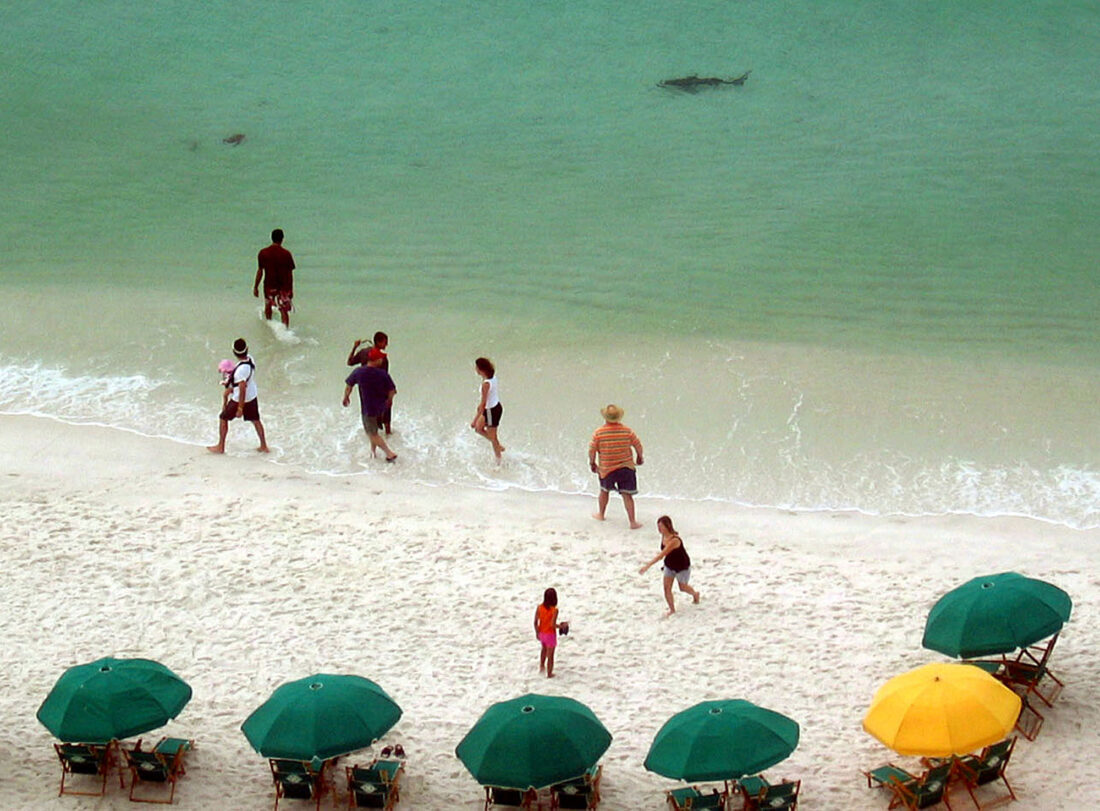First things first: Shark attacks are very rare. According to the Florida Museum of Natural History, which tracks global shark attack statistics, they are 1 in 11.5 million rare, making a car accident, a lightning strike, or a fireworks injury far more likely. But they do happen, and over the course of this summer, incidents have repeatedly made headlines, particularly from Florida. So, are shark attacks on the rise?
Over the past several decades, yes. For this particular year, not really.
The biggest reason for the increase over the past fifty or so years is simple: There are more people on the coast. “There are more opportunities for interactions and increased reports of sightings because of the significant increase in the amount of people recreating in the water, be it swimming, kayaking, or fishing,” says Alyssa Andres, a marine scientist at Florida State University who researches bull sharks. “That’s especially true of Florida, where we’ve had a huge influx of people even just since the pandemic.” Couple that with the state’s 1,350 miles of coastline, and it makes sense that Florida is by far the most common site of attacks in the United States.

Other factors are at play too. Conservation measures for marine life are working: In 2019, Florida began requiring shark fishermen casting a line from shore to get a free shark-fishing license, view an online course, and make sure species like the great hammerhead remain in the water during handling for release. Those efforts, plus changes to historical catch limits on species like blacktip sharks and better management for migratory species, have helped populations regain a foothold (though some 35 percent of shark species are still threatened with extinction worldwide). At the same time, overfishing plays a role. “As marine resources are being fished down, competition for those resources is heating up, including between anglers and sharks,” Andres says—and that can lead to greater chances for human-shark interactions.

In addition, climate change, which is leading to warmer waters, could be shifting shark ranges; the fish are moving from the Southern Hemisphere to the Northern Hemisphere, a 2016 study found. Plus, ocean pollution of all kinds is steadily affecting water quality, in turn making it easier for sharks to mistake people for prey.
Still, for 2024, the data is on track to be an average year. Between 2018 and 2022, an average of sixty-three unprovoked incidents occurred worldwide annually. Last year brought sixty-nine unprovoked attacks, a number that was slightly higher but still within the trend; it’s normal for the number to fluctuate. This year there have been about forty unprovoked attacks so far—also on track for a normal year.
As Gavin Naylor, the spokesperson for the Florida Museum of Natural History’s International Shark Attack File, has said, “I tell people if sharks targeted people we would have ten thousand bites a day.” Humans are simply not on the menu for sharks, and most bites are exploratory. “Most often, they’re just trying to feel out what you are,” Andres says. “In the vast majority of natural encounters they will realize you’re not food, and they’ll leave.”
Of course, that’s cold comfort to the unfortunate swimmer receiving an exploratory nibble, and there are some basic safety tips to bear in mind when venturing into sharks’ homes: Swim with a buddy or buddies, as sharks are less likely to attack a group. Don’t splash around in one place for a long time—the noise can sound similar to a fish in distress. Don’t wear flashy jewelry, as that can glint like the skin of a prey item. And don’t swim at dawn or dusk, when visibility is low.
As Andres points out, it’s on us to mitigate the risks, to respect sharks as the impressive predators and key ecosystem players they are, and to forge a future where sharks and humans can safely coexist.








